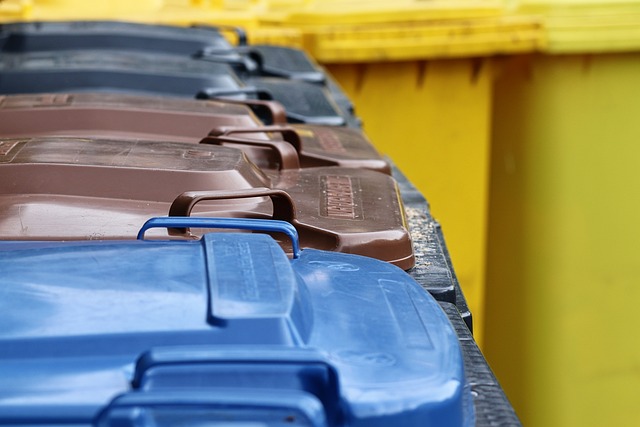Green Ridge project voted on by Cumberland commission
Published 2:39 am Thursday, April 24, 2025
|
Getting your Trinity Audio player ready...
|
The future of the proposed Green Ridge landfill is now in the hands of Cumberland County Supervisors. After a lengthy public hearing on Monday, April 21, planning commission members took two votes and eventually made a decision. By a 4-3 vote, with Stephen Donahue making the motion and Kevin Meadows seconding, the commission recommended to deny the application. Matthew Seal and Harry Donahue also voted to recommend denial, with Steve Rosen, Hubert Allen and William Flippen opposing.
Before we go any further, let’s make that part clear. This does not mean the landfill proposal goes away. As we mentioned last week, the planning commission is an advisory board. The group makes recommendations, but under Virginia law, it’s the county board of supervisors that will have the final vote to either approve or reject it. This is part of the process.
Residents raise questions
Most of the questions and concerns raised in Monday’s meeting were the same as or similar to those raised over the last four months. One of the major parts involved future plans.
“I’ve heard the word “initial, initial, initial,” said Cumberland resident Diane Joyner. “How large is this dump project going to get?”
Joyner was concerned over the fact Green Ridge earlier this year acknowledged the current proposed landfill was the “initial phase” of the project. That initial phase would only have 104 acres out of the 1,177 acre site available for active dumping. That’s down from 650 acres in the original plan.
But that doesn’t mean it would permanently be that size. Right now, Green Ridge doesn’t have the permits needed to build on or disturb wetlands, creeks and streams. Will Shewmake, an attorney with the firm Woods Rogers and representing Green Ridge, said in the Feb. 10 workshop if the company does get those permits, things would expand. How large would that expansion be? It could then potentially jump from 104 acres to 350 total acres available for garbage disposal.
It would also mean a significant increase in the size of the garbage mounds. The current application being considered by Cumberland allows trash to pile up to 140 feet above ground level. If Green Ridge gets to expand, they could go up to 225 feet above ground level. The biggest increase would be in the amount of trash brought in. The current application limits that to 1,500 tons of garbage a day. The expansion would allow them to haul in 3,500 tons per day. It would also increase the number of nearby homes impacted. With this “initial phase”, there are 37 houses within a half mile of the disposal area. With expansion, that would climb to 58 homes.
The maximum capacity, Green Ridge has said, would be 30 million cubic yards. The tons in a cubic yard vary, depending on the density of the material, but the average is roughly 1.65 tons per cubic yard.
Green Ridge rules put forward
Cumberland staff also laid out their recommended rules, if the landfill gets approved. Cumberland Planner Stephany Johnson cautioned that their version looks a bit different than what Green Ridge is suggesting.
“Although the staff outside legal counsel have been negotiating for several months, there are some items that have not been agreed upon completely,” Johnson said. “There are some conditions that will be different from what the applicant will propose.”
Part of those rules would involve Green Ridge hiring someone to handle questions, inquires and complaints from county residents relating to the operations of the facility.
“This person’s contact information shall be made generally available to the residents of the county by posting on the facility’s website in a visible location at the convenience center and at the county’s website,” Johnson said. She added that a copy of the written complaints would be provided to the county at minimum on a monthly basis.
We’ll go over the planning staff’s rules in more depth next week.
A question of what happens next
Sonya Branch-Wilson also raised a point about the future. Branch-Wilson, the current president of the AMMD Pine Grove Project, pointed out that this isn’t exactly a good way to attract young families to Cumberland or to keep the younger residents who live here now. What happens, she asked, when those younger residents leave?
“My generation and those that come after absolutely refuse to co-exist with such a blight on our community,” Branch-Wilson said. “How will the county thrive with an elders only demographic?”
She also pointed out that having a landfill for a neighbor, regardless of size, does not help the AMMD Pine Grove Project bring people to its museum.
“Who would choose to immerse themselves in history and culture at a living history museum when their experience is marred by an offensive odors of waste right in our backyard?” Branch-Wilson said.
The museum, formerly known as Pine Grove Elementary, was one of six schools built in Cumberland County to educate African-American students during the early part of the 1900s. What happens to that living history museum, Branch-Wilson asked, when trucks are hauling trash down Pine Grove Road?
During the March workshop on this application, company officials said there would be an estimated 75 waste hauling trucks traveling down Pine Grove Road each day. Plus, it’s likely work will be needed on the road’s shoulders and pavement, to handle that traffic. What impact will that have on both the museum’s attendance and residents who live nearby?
The argument in favor of approval
And the planning commission’s decision wasn’t completely unanimous, as noted above. In fact, the first vote taken by the group on Monday was a recommendation to approve the application. That was shot down by a 4-3 vote. Planning Commission Vice Chair Hubert Allen had made the motion to approve, saying Cumberland needed this project.
“In my district, I’ve only had three people say no to the landfill,” Allen said. “What I’m hearing from the people in my district is we can’t let this go. We need something to help the tax base in this county. Granted, it’s not what I want, but it’s better than nothing.”
Allen also argued that at some point, Cumberland has to say yes to a project and stop rejecting proposals when they come in. He said over the last 25 years as a developer, he brought in three projects and each of them had been rejected by the board of supervisors. He also argued that everything mentioned in Monday’s hearing was focused on fears about ‘what if’ rather than facts.
“Everything I’ve heard tonight has been opinion, opinion, opinion,” Allen said. “There are no hard facts about what (the landfill) is going to do. I heard somebody mention there’s going to be a truck every 10 minutes. When I divided it out, it was not that number. I commend ya’ll for coming, I commend you for being active in government, but you’re a small small minority in this county.”
Planning Commission member William Flippen also voted in favor of the project, arguing that if Cumberland rejects this project, all that likely means is that another nearby county will get it.
“We talked a lot about fear tonight and pretty much that’s all we talked about,’’ Flippen said. “What happens if plan B is for Buckingham? What if they say it’s ok? Buckingham has taken a lot of things that we haven’t taken. We could end up getting no money and more truck traffic, because the truck traffic that would be coming from the east would be coming through Cumberland. And if you put a landfill in Buckingham, where does the water drain? It drains into the Willis River and the Willis River runs through Cumberland. Voting it down in Cumberland is not going to magically make the trash disappear. It’s got to go somewhere.”
What’s the next step for Green Ridge?
Now Green Ridge officials will take this application to the Cumberland Board of Supervisors. They will hold a public hearing, view a presentation from the company and eventually vote.






